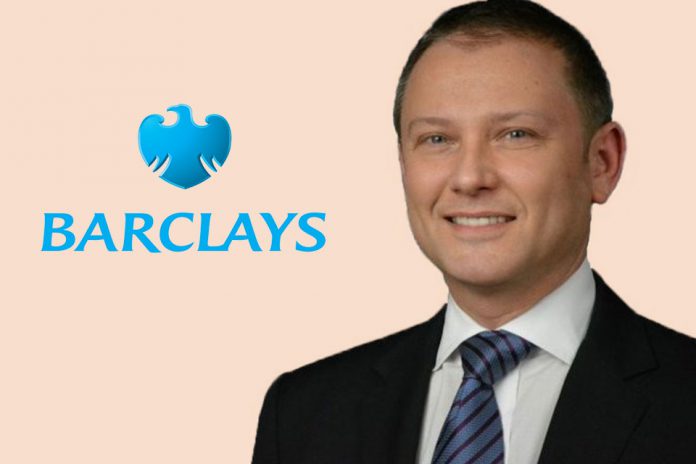Financial services need to tailor investment and portfolio management so it can evolve with consumers life stages, according to Barclays UK managing director and head of strategic, wealth management Slava Shafir.
The level of capital being invested into the WealthTech space has been increasing YoY at a stable rate, having increased from $928.6m in 2014 to $2.5bn last year, according to data by FinTech Global. While there has been a steady increase, 2018 looks set to have a sharper rise in funding, with the year already seeing $817m more deployed in the space. This equates to a 30 per cent increase compared to the whole of 2017, with one quarter still left. There have been some high value deals closed in the space this year, including the $150m Series E of investing and trading marketplace eToro and the $120m Series D round of China-based digital investment platform Snowball Finance.
As the space continues to evolve, more banks are developing their own technology solutions or partnering and integrating established WealthTech services. Slava Shafir believes that asset management capabilities need to be integrated with banking, and overlaid with deep investment and portfolio management tools. The best way to do this is by making use of the new levels of data being made available and using this information to take robo-advisors and financial advice to the next level by providing planning details before they realise they need it.
He said, “You need an ecosystem of players which can componentise financial advice and you can access it based on how you demographic is evolving or what is important to your people today. This really needs to be wrapped in the gamified, user-friendly experience which actually allows you to learn about those things ahead of time so you’re ready when it’s time for you to make a financial decision, whether it’s having children or retirement.”
Through the implementation of PSD2 across Europe earlier in the year, and the open banking initiative it supports, there is a lot more data sharing and partnerships in the market. With more data being readily available, it has meant financial services can start to build deeper consumer profiles and really keep up with the needs of their customers. Instead of having to wait for a customer to realise or worry about their financial future, financial institutions can begin to be more active. Through increased data, they can begin to inform customers around certain age that people tend to get married or buy a house at this stage in their life, helping to make a smoother financial planning route.
At the core, its simply that financial institutions need to keep up with their consumers needs, which has not been as simple as expected. “I think the answer is obvious but somehow it doesn’t work in the financial services, because the people that are working on some of those propositions are too far removed,” he added. That being said, Shafir sees this is changing and banks are experimenting with technology and WealthTech solutions and building a data sharing ecosystem.
The reason financial services have been a little too far removed is because previously they didn’t necessarily have to think about the consumer needs as much as they had sales people contacting directly or people went to the bank to buy the product, Shafir stated. But things are changing for the better, “We are evolving in how we develop with startups, as well as internally, by taking sufficient time to think about the regulatory risk. The more we do with a partner, the more we actually get smarter about data and testing, and really learn how to quickly evolve, kill and test and evolve again.”
Open banking has increased the number of FinTechs partnering with traditional financial institutions, onboarding them for capabilities they are excelling at and which FIs might not be as good at. Partnering can help with the speed to market, reduce risk, and incorporate people that don’t have the legacy way of thinking, or those that might approach problems in a different manner. Shafir does believe if a firm already has the capabilities to offer a new tech-based solution, like robo-advisory, and its relatively easy to market then there’s no issue with doing it in-house.
However, he said, “I think sometimes that when we think about setting up new business propositions, we under estimate what everything takes to actually stem that out. So, I think knowing what matters, how much you need, and what is unique to you, is what each organisation needs to figure out. Partnering with FinTech or any tech, gives you the ability to supplement the gap so if you think about that it will deliver immediate benefits.”
One of the added bonuses of partnering with a WealthTech is it can open up new revenue streams or offerings, which the FI might not have otherwise offered. A key example of Barclays doing this exact thing is with its new partnership with invoice financing platform MarketInvoice, which was completed a couple of months ago. As part of the deal, the bank took a ‘significant’ minority stake in the company and will give its customers access to digital invoice financing.
This service will be introduced to UK SME clients of Barclays over the coming months in areas including East Midlands, West Midlands, Herts and North West London. A full roll-out is scheduled for next year. Barclays made this partnership as it had identified the areas it needed to evolve in, what its customers wanted and how they could fill this gap.
“You want long term partnerships whether it’s a FinTech or not. I think you should treat it like that, you should be open and collaborative, know what you’re using it for, what you bring to the table and I think commercials will reflect that. But you need to be vested in their success and they in yours. If you can find commercial terms which align to that, which quite often you can, then it really works.”
Building that layer of trust
While open banking and wider sharing of data has been a big benefit to the market and opened up a wide variety of deeper opportunities for consumers, there is still an issue with trust. Cyberattacks have become much more prominent and wide spread, making people very sensitive to what potential risks there are. This is magnified when it involves financial data and there needs to be a good level of trust between the customer and institution.
Shafir said, “There is absolutely potential risk, but with that, if you think about a firm, we should build sufficient controls. It needs to be driven by the client or customer, who’s ultimately data that is, and ultimately that customer will decide if the convenience wins or not.”
While this level of data sharing is relatively new to the UK, it has been much more common in other countries like Germany and Norway. As customers begin to gain a deeper understanding and experience data sharing more, it will be easier to understand their comfort levels.
Identity authentication is one of the areas Shafir sees which can be benefited by increased access to data, but could also be a potential risk point. It’s a balancing act of opening up systems so this can work properly but then making sure everything is protected. “As we know with cyber and everything that’s taking place in the world, it’s a race that never stops and you’ve got to continue to keep up and keep going.”
Shafir explained how financial institutions are currently trying to work out how to orchestrate all of the new services, but the key thing is that its safe but also flexible.
Copyright © 2018 FinTech Global











